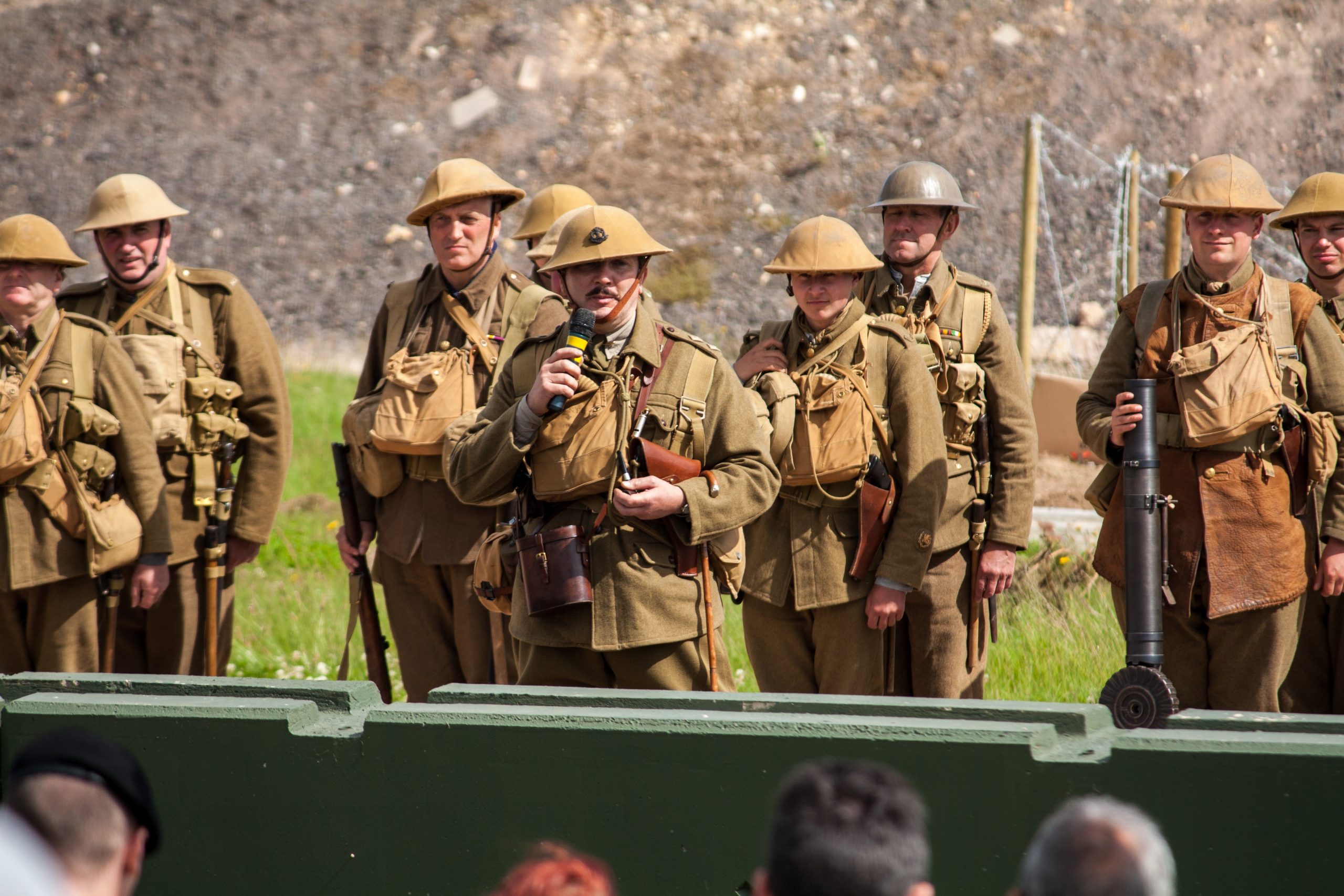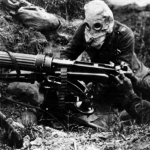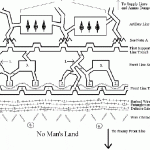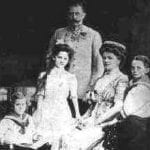Most Americans are indifferent about the nation’s involvement in World War One (under half say the U.S. had a responsibility to fight in the war; one-in-five say it didn’t). Many figure it entered the conflict too late to claim much credit, or intervention was discreditable. Some say the U.S. had no compelling national interest to enter the Great War; worse, U.S. intervention allowed Britain and France to force on Germany an unjust, punitive peace that made the rise of Adolf Hitler’s National Socialist German Workers Party inevitable. But others argue that America’s involvement saved Europe from a militaristic dictatorship that would have resulted in a worse 20th century. We look at all these aspects of America’s involvement in the war in this episode.
- President Wilson: Background
- Wilson had grown up in Virginia and other parts of the South. His father was a minister, and the family moved a lot.
- Wilson attended Princeton and later taught there. Eventually, he became the president of the university.
- He was elected Governor of New Jersey and then US president in 1912.
- A devout Presbyterian, he believed that he was being used by God to affect change worldwide. He saw himself as an outsider and above politics. He tried to communicate directly with the American people, bypassing political institutions.
- When the war broke out, he was determined to keep the U. S. neutral.
- He won re-election in 1916, running under the slogan “He has kept us out of war.” But at the same time, he offered to mediate an end to the war. The Europeans rejected his offer.
- America’s March Toward War
- When war broke out in 1914, few Americans were interested in getting involved.
-
12 million immigrants had come to America (most from Europe) since 1900, and many had experienced conscription, European-style military service, and even war. They wanted no part of war.
-
Many immigrants had ties to Germany and Austria-Hungary. Irish immigrants felt no love for the Allies, especially the UK.
-
Still, most Americans sympathized with the Allies. Plus, American trade had increased with the Allies due to British naval policy (especially the blockade), while trade with Germany had been virtually eliminated.
-
German sinkings of ships containing Americans caused Americans to gradually turn against the Germans. The most famous sinking was the Lusitania in 1915, a luxury liner. 1200 people died, including 128 Americans. The Sussex sinking in 1916 also caused a great deal of outrage among Americans.
-
The sinkings led to a movement among Americans called the “Preparedness Campaign.” Preparedness advocates wanted an expanded and well-trained US Army and Navy in the event that America were to join the war. Theodore Roosevelt was a key leader of the movement.
-
Some Americans volunteered to join European forces. One famous unit was the French “Escadrille Lafayette,” an air unit.
-
President Wilson tried to calm the increasingly pro-war passions of Americans, charting a middle ground. He argued that Americans were “too proud to fight.”
-
Between 1914 and 1917, American production greatly increased. Steel production increased 76%. American exports quadrupled. American loans helped finance the Allied war effort, and America went from being a debtor nation to a creditor nation.
-
In February of 1917, Germany announced the resumption of Unrestricted Submarine Warfare. The U. S. broke diplomatic relations with Germany and began arming merchant vessels.
-
On March 1, Wilson made the “Zimmermann Telegram” public. This had been sent by the German foreign minister to Mexico. Zimmermann had proposed that Mexico go to war with the US, with German support. In return, Germany would make sure that Mexico received the states of Texas, Arizona, and New Mexico as compensation. This was the last straw for most Americans.
-
On April 6, 1917, the U. S. formally declared war on Germany. In his war message, Wilson said “The world must be made safe for democracy.” But he said the U. S. was not joining the Allies, but rather becoming an “Associated Power.”
-
American War Aims and Propaganda
-
The Germans, in particular Kaiser Wilhelm, were portrayed as evil monsters by American propagandists.
-
On January 8, 1918, Wilson laid out American war aims very clearly in a set of principles called the “Fourteen Points.” These included national self-determination, open covenants (treaties), disarmament, freedom of the seas, free trade, a free Poland, and (most importantly), a League of Nations (which would provide collective security).
-
The Fourteen Points were intended partly to counter Bolshevik propaganda.
-
The Fourteen Points were received enthusiastically by many people around the world. Wilson became a hero. On the other hand, some European leaders saw Wilson as naive, moralistic, and presumptuous. George Clemenceau said “God gave us the Ten Commandments and we broke them. Wilson gives us the Fourteen Points. We shall see.”
-
Some of the points were in conflict with the Allies’ war aims and actions.
-
Wilson also portrayed the war as a Crusade for Democracy.
-
A government agency called the Committee on Public Information (CPI) was formed. It grew rapidly, with 150,000 employees. Their job was to promote enthusiasm for the war. They had thousands of employees called “Four Minute Men” who travelled the country giving four-minute patriotic speeches. In 18 months, about 400 million spectators heard 1 million four-minute speeches.
-
The CPI also commissioned movies.
-
German language and culture were discouraged in the U. S. German works of music were shunned by American orchestras. German language newspapers were shut down. German-language church services were stopped. Sauerkraut became known as “liberty cabbage.” Hamburgers were renamed “liberty sandwiches.” Even German Measles were now called “Liberty Measles.”
-
People with German surnames Anglicized them. Others of non-English descent were encourged to fully Americanize.
-
-
Industrial and Political Mobilization
-
The federal government became actively involved in the economy, founding the War Industries Board. They set standard prices and profits and tried to prepare the U. S. economy for full mobilization. They used the threat of nationalization to get U. S. corporations to cooperate.
-
Railroads were nationalized.
-
The income tax (passed in 1917) was expanded.
-
The Food and Fuel Act (August 1917) used price controls to spur production and decrease consumption. Under this law, Herbert Hoover was made food administrator.
-
Industrial production boomed during the war, leading to a shortage of workers. The power of labor unions increased. 1 million women entered the workforce.
-
Free speech was limited. The press was censored. The Espionage Act of June 1917 and the Sedition Act (May 1918) cracked down on speech viewed as hostile to the war effort. The American socialist Eugene Debs was jailed for a speech in which he defended opposition to the war.
-
- Military Mobilization
- The U. S. built up its military with great speed. In May 1917, Congress passed the Selective Service Act. By the end of the war, 3 million men would be drafted, and the total number of American servicemen was 5 million. About a fifth of these were foreign born.
- General John J. “Black Jack” Pershing was placed in command of the American Expeditionary Force.
- American soldiers were nicknamed “Doughboys.” No one knows for sure where this came from.
- The first American soldiers landed in France in June 1917 (but this was just a small initial force). The arrival of the American Expeditionary Force (AEF) was very gradual. But by the end of the war, 2 million more would arrive.
- Many American soldiers used French or British weapons and gear.
- For many American soldiers, coming to Europe was a great adventure.
- The Americans wanted to keep American forces together as an integrated unit. This was in opposition to the French and British desire to divide them up. African-American soldiers (400,000 in all) served in segregated units, but under French command. One unit, the “Harlem Hellfighters,” received the Croix de Guerre (the highest French award) from the French government.
- The first American attack occurred on May 28, 1918 at the village of Continie.
- In June 1918, at Bello Wood, American forces stopped a German advance.
- After this, the AEF went on the attack in September 1918 at St. Mihel and then in the Meuse-Argonne offensive.
- One famous American soldier was Alvin York, who was originally a pacifist. In the Meuse-Argonne, when his unit was pinned down, he killed 25 German soldiers and obtained the surrender of 100 others.
- 117,000 American soldiers died in WW1.
- Many future American political leaders served in WW1, including Harry Truman, George Marshall, and George Patton.
This article is part of our larger selection of posts about World War One. To learn more, click here for our comprehensive guide to World War One.
Cite This Article
"US Involvement in WW1" History on the Net© 2000-2024, Salem Media.
April 24, 2024 <https://www.historyonthenet.com/us-involvement-in-ww1>
More Citation Information.









